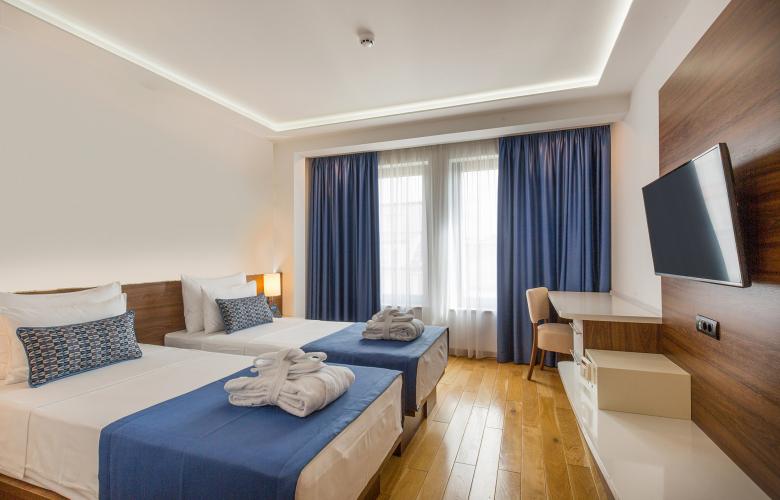Five things you didn't know about hotel asset depreciation
Contact
Five things you didn't know about hotel asset depreciation
To help hotel property owners and tenants gain a better understanding of depreciation, BMT Tax Depreciation outlines five little-known facts about the process.
Despite growing awareness of the benefits of claiming depreciation deductions, many business operators and owners still underestimate their potential claim.
Here are five facts you didn’t know about commercial depreciation.
1. Tenants and owners can both claim depreciation
Commercial property owners and their tenants are both entitled to claim depreciation deductions for the natural wear and tear that occurs to a building’s structure and the assets within it over time.
Capital works deductions refer to the building’s structure and items considered to be permanently fixed to it such as bricks, walls and basins. The depreciation rate for capital works deductions vary based on the type of property and its construction commencement date. These deductions can generally be claimed by the property owner, rather than the tenant.
Plant and equipment assets are items that are easily removable such as carpet, blinds and shelving. These deductions are calculated using an effective life provided by the Australian Taxation Office.
Both property owners and tenants are eligible to claim depreciation for plant and equipment assets. Owners of the building can claim on assets they own, while tenants can claim on any fit-out they install from the starting date of their lease.
Click here to request a commercial tax depreciation schedule
2. Commercial depreciation isn’t affected by 2017 legislation
In November 2017, the Federal Government made changes to the way property investors can claim depreciation for plant and equipment assets. Specifically, the 2017 legislation affects previously used plant and equipment assets found in second-hand or previously owner-occupied residential investment properties. If an investor exchanged contracts on a second-hand residential investment property after 7:30pm on 9 May 2017, they can no longer claim depreciation for any existing plant and equipment assets within the property.
Fortunately, owners and tenants of commercial property are not affected and can continue to claim depreciation deductions for both capital works and plant and equipment assets.
3. Pooling can increase deductions
Low-value pooling allows commercial property owners and tenants to group qualifying assets in a pool that can be depreciated at an accelerated rate, rather than at each asset’s individual rate. Assets in the low-value pool can be claimed at a rate of 18.75 per cent in the year of purchase, then 37.5 per cent every year following. It’s also important to be aware of the current pooling rules and regulations for small to medium-sized businesses following the government's stimulus package.
4. You can claim residual depreciable value when renovating
Given that commercial properties are regularly renewed and updated, commercial property owners and tenants are eligible to claim additional deductions through a process known as scrapping.
Scrapping applies when removed assets and structural elements within a building have a remaining un-deducted value. At the time of removal, the owner of the asset can claim that remaining value as an immediate deduction in that financial year. Often overlooked, these valuable deductions apply to the structural capital works elements of a building as well as the removable plant and equipment assets.
A Quantity Surveyor can also estimate anything in the property that is part of a previous renovation and calculate the deductions accordingly. This includes items that may not be so obvious, such as new plumbing, waterproofing and updated electrical wiring. For capital improvements to qualify for the division 43 building write-off, construction must have commenced within specific qualifying dates.
5. The easiest way to claim depreciation is with a depreciation schedule
The easiest way to claim maximum depreciation deductions is to arrange for a Quantity Surveyor to prepare a tax depreciation schedule for the property.
A BMT Tax Deprecation Schedule outlines all available deductions over the forty-year life of your property and charges a one-off fee. This fee is 100 per cent deductible.
BMT has prepared tax depreciation schedules for commercial properties ranging from primary production, manufacturing, retail centres, mining, office towers, medical centres, traveller accommodation and more.
To find out more, request a quote or call BMT Tax Depreciation on 1300 728 726 today.
This is a sponsored article provided by BMT Tax Depreciation.
More from BMT Tax Depreciation:
Scrapping can boost a hotel’s cash flow - BMT Tax Depreciation
See the deductions available in a hotel lobby - BMT Tax Depreciation







